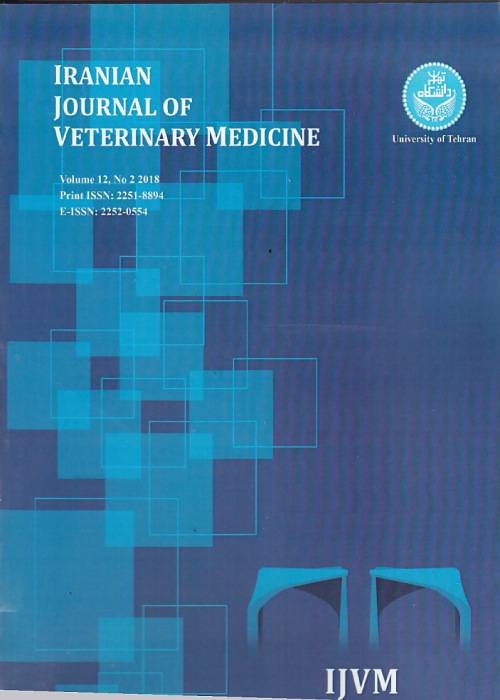Frequently observed parasites in pet reptile's feces in Tehran
Author(s):
Article Type:
Research/Original Article (دارای رتبه معتبر)
Abstract:
Backgrounds
Many wild-caught reptiles harbor some kind of parasites. Captivity with negative effect of poor sanitary and husbandry management may lead to clinical disease. The increasing trend in keeping non-native reptile species in the last decade emerged a need for the specification of reptile parasites and their hosts.Objectives
The study aims to gain data on intestinal parasites of reptiles kept as pets or in small private collections in close contact with people.Methods
A combination of native and iodine stained direct smears along with flotation concentration were used to investigate parasites in pet reptiles feces. All samples were investigated macroscopically and a smear was prepared and stained by modified Ziehl Neelsen for detection of Cryptosporidium.Results
Stool samples from 100 pet or small zoological reptile collections (Lacertilia=36, Serpentes=20, Chelonii=11, Corocodilia=1) were collected. The total occurrence of parasite was 52%. 64.8% of the examined Lacertilia, 35.3% of Serpentes, 45.5% of Chelonii were infected. Eimeria, Isospora, Cryptosporidium, Trichomonas, Balantidium, Strongylid and Oxyurid eggs and amoeba were identified. Cryptosporidium was detected in Lacertilita, Serpentes and Chelonii. In the only sample from a Nile crocodile no parasites were detected. Eimeria was detected in Bearded dragon, Indian python, Albino python and king cobra and Isospora was identified in Bearded dragon and the alien Cheloniid species Red-eared slider. Amoeba was identified in Iguana iguana and Horsfield tortoise.Conclusions
Trichomonads, Balantidium, Cryptosporidium, Isospora, Eimeria, amoebae and nematode eggs were identified in the investigated samples. Cryptosporidium were detected by specific stains in 14 samples. Sauria was the most infected suborder (64.8%) while 32.4% of snakes and 45.5% of chelonians were infected. Parasites are common in pet reptiles but the parasite species, the degree of infestation and hygienic management will determine the ultimate clinical outcome of the existing parasite infections. Hence examination for endoparasites should be recommended for checking the health status of all captive or newly entering reptiles.Keywords:
feces , lacertilia , parasites , reptile , serpentes
Language:
Persian
Published:
Iranian Journal of Veterinary Medicine, Volume:12 Issue: 1, Winter 2018
Pages:
19 to 25
magiran.com/p1803766
دانلود و مطالعه متن این مقاله با یکی از روشهای زیر امکان پذیر است:
اشتراک شخصی
با عضویت و پرداخت آنلاین حق اشتراک یکساله به مبلغ 1,390,000ريال میتوانید 70 عنوان مطلب دانلود کنید!
اشتراک سازمانی
به کتابخانه دانشگاه یا محل کار خود پیشنهاد کنید تا اشتراک سازمانی این پایگاه را برای دسترسی نامحدود همه کاربران به متن مطالب تهیه نمایند!
توجه!
- حق عضویت دریافتی صرف حمایت از نشریات عضو و نگهداری، تکمیل و توسعه مگیران میشود.
- پرداخت حق اشتراک و دانلود مقالات اجازه بازنشر آن در سایر رسانههای چاپی و دیجیتال را به کاربر نمیدهد.
In order to view content subscription is required
Personal subscription
Subscribe magiran.com for 70 € euros via PayPal and download 70 articles during a year.
Organization subscription
Please contact us to subscribe your university or library for unlimited access!


